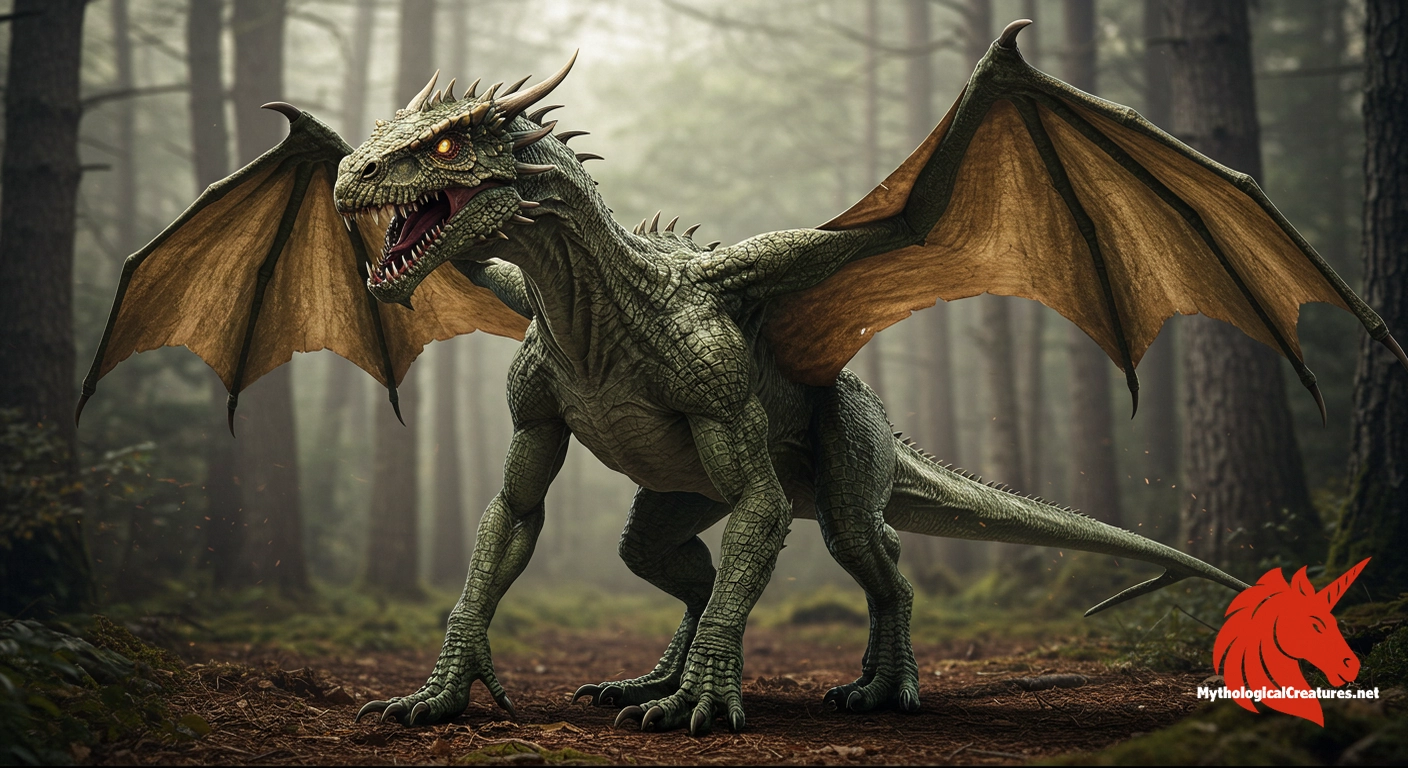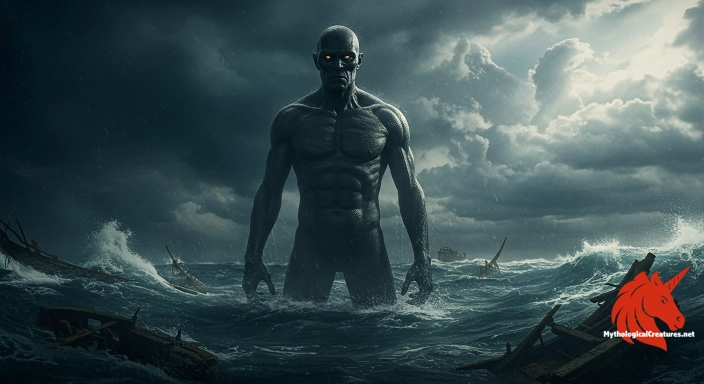Wyvern: The wyvern is a mythical dragon known for its two-legged stance, expansive wings, and pointed tail.

Wyvern
Wyvern - Serves as an enduring symbol in heraldry and a representation of medieval mythology.
Origins & First Encounters
The wyvern is one of the most intriguing creatures to emerge from Europe’s rich mythological tapestry, captivating imaginations with its distinctive form and storied past. Its origins can be traced back to the medieval period, where early attestations in art and literature laid the groundwork for its enduring popularity. Emerging in a cultural context steeped in heraldic symbolism and chivalric ideals, the wyvern soon became a favourite motif for families and institutions. Its streamlined, two-legged anatomy with imposing wings set it apart from the more conventional, four-legged dragons of lore. The creature was conceived as both a representation of martial vigour and a guardian of noble lineage, blending beauty with an undercurrent of latent danger. Over time, these attributes ensured that the wyvern remained a symbol of both protection and defiance. Its early depictions reveal an evolution from utilitarian heraldic devices to characters steeped in vibrant myth and adventure. The initial amalgamation of oral tradition and visual artistry in medieval manuscripts further cemented the wyvern’s place in European cultural consciousness.
Source Texts & Tale Variants
Medieval bestiaries and heraldic compendia provide some of the earliest documented sources of the wyvern’s legend, weaving together fragments of literary and artistic tradition. These texts, though sparse in explicit narrative, offer rich visual details that have informed subsequent retellings in folklore and art. Illuminated manuscripts and carved stone depictions contributed to a diverse array of story variants, each emphasising different aspects of the creature’s nature. Some accounts highlight its role as a minor guardian of treasures, while others project it as a symbol of martial prowess and defiance. The creature’s frequent appearance on crests and in official seals also motivated narrative embellishments that ranged from noble protector to wild, untamable beast. Over the centuries, these sources have been reinterpreted and adapted, giving rise to various narrative strands that borrow elements from both heroic epic and cautionary tale. Regional folklore has further diversified its story by incorporating local motifs and supernatural qualities. While complete scholarly concordance is lacking, this tapestry of sources richly underscores the wyvern’s mythological versatility and its enduring allure.
Form & Powers
The wyvern is consistently depicted as boasting a lean, agile body that marries the anatomy of a reptile with the grace of flight. It is most recognisable for its two robust legs and a pair of expansive, membranous wings that emerge from its shoulder region, reminiscent of bat-like structures. The creature’s scaled exterior is often rendered in hues that range from glistening emerald to muted greys, contributing to an appearance both vibrant and enigmatic. A long, pointed tail—occasionally ending in a venomous tip—adds an element of danger and balance to its form. Its head, angular and fierce, is typically adorned with small, forward-curving horns that accentuate its predatory aspect. The sharp, penetrating eyes, imbued with a haunting intelligence, heighten the wyvern’s mystical demeanour. Artists have frequently emphasised the contrast between its aerodynamic physique and the rugged textures of its scales, capturing both beauty and brutality. Variations in depictions sometimes introduce subtle differences in body length, wing span, or scale detailing, underscoring a flexibility that has allowed the wyvern to be reimagined by many creative cultures. Such detailed physical portrayals help to establish the creature as a symbol of both elegance and formidable power.
Regional Faces
Across Europe, the wyvern has been adapted to reflect the unique cultural and artistic visions of diverse regions. In British heraldry, the creature is often depicted with decorative flourishes such as a banded tail or intricately detailed wings, reinforcing its status as a symbol of nobility. In contrast, French and German traditions tend to portray the wyvern with a more rugged, battle-worn appearance that speaks to tales of conflict and chivalry. Eastern European adaptations sometimes imbue the creature with additional mythic properties, aligning it with both protective and punitive roles in local legends. Scandinavian lore, in particular, has occasionally merged the wyvern’s characteristics with those of other serpentine beings, thereby creating a hybrid that is both enigmatic and striking. Regional artistry has also experimented with elements such as scaling patterns and wing structure, resulting in a wide array of visual interpretations. These local variations serve to highlight how the creature’s core attributes can be moulded to fit different narrative and symbolic needs. The enduring appeal of the wyvern in heraldry and folklore demonstrates its ability to evolve in response to regional cultural identities and historical circumstances. This rich regional diversity underscores the creature’s extensive influence and adaptive nature within the European mythological canon.
Cultural Parallels
The wyvern occupies a distinctive niche within the pantheon of legendary creatures, often standing shoulder to shoulder with the more traditional four-legged dragons in its thematic resonance. Its streamlined, bipod design invites comparisons with other mythical draconic beings, yet its specialised wings and pointed tail set it apart as a creature of singular grace and agility. Similar in some respects to the Scandinavian lindworm, the wyvern shares a serpentine elegance while also embracing a more avian dynamism. In the realm of heraldry, both the wyvern and its fuller-bodied cousins serve as emblems of strength and protection, though the wyvern’s unique anatomy conveys a sense of swift action and defiant agility. The creature’s features also find echoes in the symbolism of griffins and phoenixes, with each mythological being contributing to a broader narrative of resilience and transformative power. Cross-cultural comparisons reveal that while full dragons in Eastern traditions often symbolise cosmic wisdom and benevolence, the wyvern frequently embodies a sharper, more aggressive energy tied to earthly conflict. Such comparative analyses underscore the importance of physical form in shaping mythological meaning and the varied interpretations that arise from regional storytelling traditions. The subtle interplay between common themes and unique attributes allows the wyvern to resonate with multiple cultural narratives, thereby highlighting its role as both a complementary and contrasting figure within the wider spectrum of dragon lore. This layered symbolic presence continues to fascinate fans of myth and legend across the globe.
Legacy & Modern Evolution
Historically, the wyvern emerged as a potent emblem in medieval heraldry, symbolising martial vigour, noble lineage, and the intrigue of arcane lore. Its evolution from a decorative motif on crests and shields to a fully realised mythical creature in literature underscores its enduring presence in the collective imagination. Over the centuries, the wyvern’s image has been refined and reinterpreted, shifting from utilitarian heraldic representations to dynamic figures in narrative art and fantasy media. Today, it features prominently in books, films, and video games where its sleek form and fierce appearance capture contemporary aesthetic sensibilities. Modern reinterpretations often enhance its predatory elegance with imaginative details, such as strikingly vivid wing patterns or subtly sinister expressions, ensuring its relevance in a fast-changing cultural landscape. The creature has also been embraced by various sports teams and educational institutions, serving as an inspiring symbol of resilience and agility. Its mythic legacy continues to evolve, bridging the gap between ancient tradition and modern fantasy, and reaffirming its importance as a cultural icon. The ongoing fascination with the wyvern is a testament to its versatile symbolism, which adapts to the inventive narratives of each new generation. In reimagining this creature, modern artists and storytellers invite us to explore themes of transformation, power, and the enduring allure of the mythical world.
Interesting Fact
An interesting observation is that wyverns are rarely depicted as fire-breathing, setting them apart from many of their dragon counterparts in popular mythology.
Quick Creature Info
Associations:
Our Mythic Legendary Rating:

Also Sometimes Known As:
Habitat:
Supernatural Powers:
Physical Attributes:
Abilities:
Behavior:
Weaknesses:
Lore:
Related Creatures, Tales or Lore
References
Discover Another Mythical Legend You May Not Have Heard Of?
Uncover the mysteries of ancient folklore and expand your knowledge of legendary beings from cultures around the world.
Dare to Meet the Umibōzu....
Mythical Disclaimer: The images and data on this site are derived from various historical and literary sources, but we have found that many myths often have multiple versions and interpretations across references, sometimes contradictory. As a result, these creature depictions are artistic interpretations—imaginative blends of folklore, legend, and a dash of AI guesswork. Because creature descriptions vary widely, our illustrations and accompanying information represent our best effort to honor mythology while bridging creative gaps. Enjoy these interpretations—just remember, we've done our best to respect the stories and validate available data, but in the realm of mythology, details often shift, imagination leads the way, and nothing is ever set in stone!
Curated by the Mythological Creatures Team (rev. May 2025)
